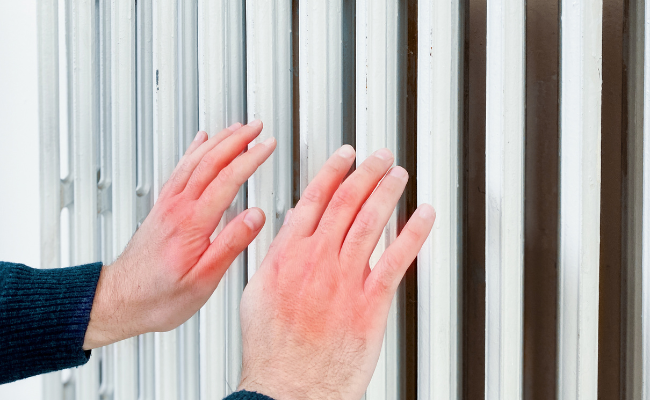How to Treat Chilblains?
- October 10, 2023
- No Comments

What are Chilblains?
Chilblains, also known as perniosis, are a form of cold injury that occurs in response to cold temperatures. Characterized by small, itchy, red, and swollen areas on the skin, typically on the extremities, chilblains affect the small blood vessels. They manifest as painful and inflamed skin patches, often appearing after exposure to cold but not freezing air. While anyone can experience chilblains, they are more common in women. In many cases, these skin patches resolve on their own without the need for specific treatment.
Why Do Chilblains Occur?
Chilblains develop when there is an abnormal response of the skin's small blood vessels to cold exposure. When the skin is exposed to cold temperatures, blood vessels may constrict initially to conserve heat. However, in individuals prone to chilblains, the blood vessels may overreact upon rewarming, leading to leakage of blood and fluid into the surrounding tissues.
How Do Chilblains Manifest?
Chilblains can present with the following symptoms:
- Reddish or Purplish Areas: Small, red or purplish patches on the skin, often on the fingers and toes.
- Swelling: The affected areas may become swollen.
- Itching: Chilblains are typically accompanied by intense itching.
- Burning Sensation: Some individuals may experience a burning sensation in the affected areas.
- Blistering: In severe cases, chilblains may lead to the formation of blisters.
Treatment Solutions for Chilblains
Warming the Affected Areas:
- Gradual Warming: If chilblains have developed, it is important to warm the affected areas gradually. Sudden exposure to heat can worsen symptoms.
Topical Creams:
- Corticosteroid Creams: Topical corticosteroid creams can help reduce inflammation and itching.
Avoiding Further Cold Exposure:
- Protective Clothing: Wear warm clothing, gloves, and socks to prevent further exposure to cold temperatures.
Moisturizing:
- Emollient Creams: Applying emollient creams can help keep the skin moisturized and prevent dryness.
Avoiding Scratching:
- Antihistamines: If itching is severe, antihistamines may be recommended to reduce the urge to scratch.
Elevating the Affected Limbs:
- Reduce Swelling: Elevating the affected fingers or toes can help reduce swelling.
Medical Attention:
- Severe Cases: In severe cases, where chilblains lead to complications such as infection or ulceration, medical attention is necessary. A healthcare professional may prescribe medications or recommend other interventions.
Benefit Points of Chilblains Treatment
- Symptom Relief: Treatment measures aim to alleviate symptoms such as itching, redness, and swelling associated with chilblains.
- Prevention of Complications: Prompt and appropriate treatment helps prevent complications such as infection or ulceration.
- Improved Comfort: By addressing symptoms and avoiding triggers, individuals experience improved comfort during the healing process.
- Faster Healing: Following recommended treatment measures can expedite the healing of chilblains, allowing individuals to resume normal activities sooner.
- Reduced Risk of Recurrence: Taking preventive measures, such as protecting the skin from cold exposure, helps reduce the risk of recurrent chilblains.
- Enhanced Skin Health: Moisturizing and protecting the skin contribute to overall skin health, reducing the likelihood of dryness and irritation.
Comments (0)